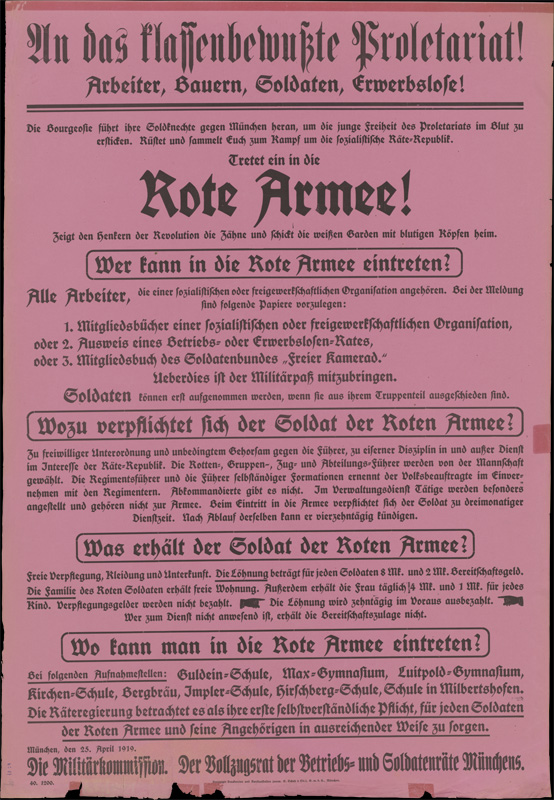Zur Verteidigung der am 7.4.1919 ausgerufenen Münchner Räterepublik wurde nach sowjetrussischem Vorbild eine „Rote Armee“ gebildet. Sie setzte sich aus revolutionären Soldaten und „Arbeiterwehren“ einiger größerer Betriebe zusammen und rekrutierte ihre Angehörigen in erster Linie in den Arbeitervierteln; neben München gab es größere Einheiten u.a. in Augsburg und Rosenheim. Eine einheitliche Organisation im Sinne einer „Armee“ kam jedoch aufgrund des Zeitdrucks und der Unterschiedlichkeit der einzelnen Verbände nicht zustande. Die Gesamtzahl der Beteiligten wird auf maximal 10.000 geschätzt, die aber nie gemeinsam zum Einsatz kamen.
Es gelang den Münchner Mitgliedern dieser „Roten Armee“, den Putsch der gegenrevolutionären „Republikanischen Schutztruppe“ am 13.4.1919 in München niederzuschlagen und drei Tage später einen Angriff auf Dachau abzuwehren. Dem Vormarsch von Reichswehrtruppen und Freikorpseinheiten auf südbayerische Städte und auf München ab Ende April und der Eroberung Münchens am 1.5. konnten aber die schlecht ausgerüsteten noch verbliebenen rund 2000 Mitglieder der „Roten Armee“ keinen größeren Widerstand mehr entgegensetzen. Hunderte von ihnen wurden – meist nach Ende von Kampfhandlungen – ermordet. Der Oberkommandierende Rudolf Egelhofer wurde standrechtlich erschossen, weitere Beteiligte erhielten langjährige Freiheitsstrafen.


